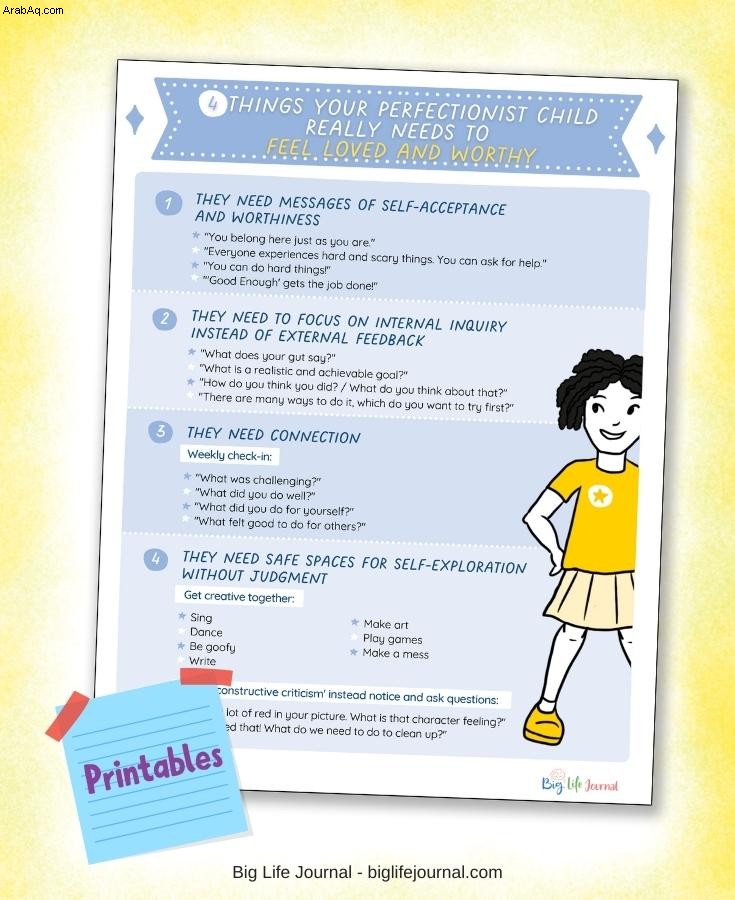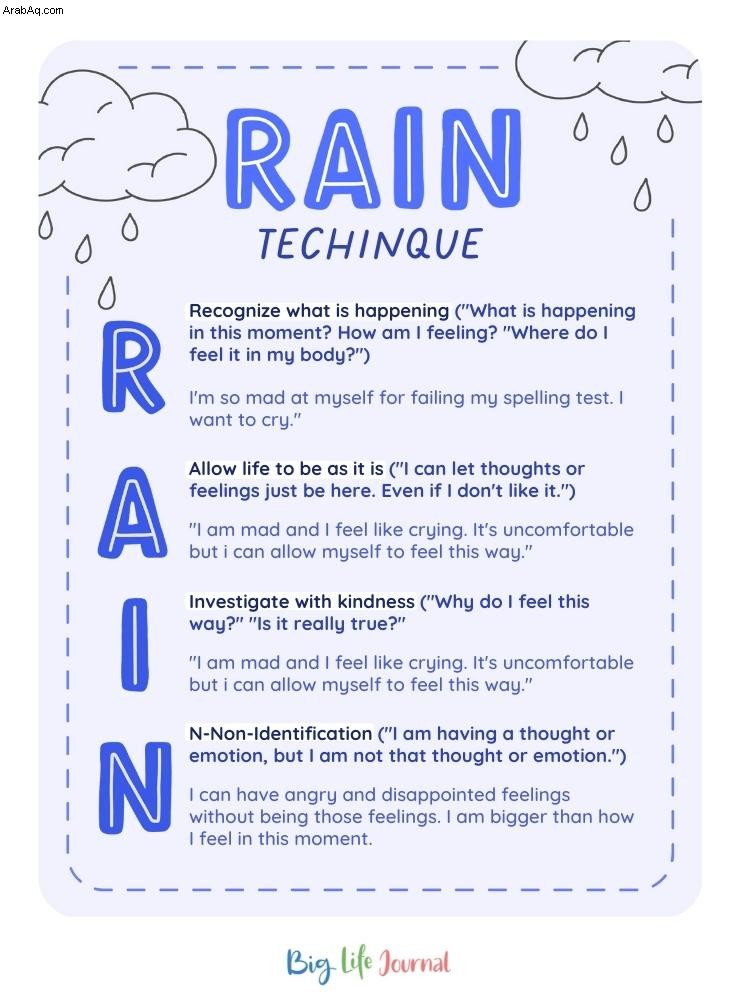يخشى معظم الأطفال الفشل ، وكآباء ومعلمين ، نريد بطبيعة الحال أن ينجح أطفالنا. ولكن ماذا لو أدركنا أن الفشل أمر جيد وخطوة حاسمة على طريق التعلم ؟
يعتبر الفشل عنصر ضروري للنجاح (ليس العكس). في الواقع ، تنمو أدمغتنا وتتطور بطرق مهمة كلما حدث فشل. عندما يفهم الأطفال هذا المفهوم ، يمكن أن تحدث أشياء مذهلة لهم (ولنا).
قبل المتابعة ، اعتقدنا أنك قد ترغب في تنزيل مجموعة Your Words Matter Volume 2 المجانية. من خلال هذه الإرشادات العشرة حول الأبوة والأمومة المكونة من صفحة واحدة ، ستعرف بالضبط كيفية التحدث إلى طفلك لمساعدته على الدفاع عن نفسه ، وزيادة الثقة به ، وتطوير عقلية النمو.
تقول راشيل سيمونز ، الخبيرة في المرونة ، "فكر في أكبر أخطائك ... فمن المحتمل أنها علمتك المزيد من الشجاعة والقوة والحكمة أكثر مما يمكن أن يحصل عليه أي نجاح." بدلاً من ترك الأطفال يخشون الفشل ، يمكننا مساعدتهم على رؤيته من أجل فرصة التعلم التي هي عليه.
فيما يلي 7 طرق لتعليم الأطفال هدية الفشل ، وكيفية القيام بذلك بمهارة:

1. التركيز على عقلية النمو
نحن نعلم بالفعل أن تطوير عقلية النمو يمكّن الأطفال. كما أنه يغير رد فعلهم على الفشل.
دراسة حديثة نشرت في Developmental Cognitive Science كشفت أنه بعد ارتكاب خطأ ، يُظهر الأطفال الذين لديهم عقليات نمو استجابة دماغية أكبر من أولئك الذين لديهم عقليات ثابتة. كانوا أيضًا أكثر ميلًا إلى تحسين أدائهم نتيجة لذلك.
الفشل أمر لا مفر منه ، ولكن من خلال تركيز انتباههم على الخطأ الذي حدث وكيفية إصلاحه ، تمكن الأطفال ذوي العقليات النامية من تحويل الفشل إلى تجارب تعليمية إيجابية.
2. دع الفشل يحدث
يستفيد الأطفال من تجربة الفشل. نحن نعلم هذا ومع ذلك يصعب على الكبار قبوله. في الواقع ، كثير من الآباء يساويون بين التربية الجيدة ومنع أطفالهم من المعاناة.
في هدية الفشل والمؤلفة والمعلمة جيسيكا لاهي توضح بالتفصيل عواقب هذا النهج. تقول إن التجارب الصعبة هي الطريقة الوحيدة نقوم بتطوير بعض مهارات التأقلم وحل المشكلات. إذا قمنا بحماية الأطفال من الشدائد ، فلن تتطور روابط الدماغ الرئيسية.
لمواجهة الخاصة بنا مخاوف من ترك الأطفال يفشلون ، يقترح سيمونز أن نسأل أنفسنا الأسئلة التالية:
- كيف سيكون أبوي الآن إذا لم أكن خائفًا (أو قلقًا)؟
- هل عواقب الخطأ دائمة أم تهدد الحياة؟
- ما الذي سيتعلمه إذا عدت إلى الوراء وسمحت لهذا الموقف بالظهور؟
امنح الأطفال مساحة للفشل. هم (وأنت) سوف يصبحون أقوى من أجل ذلك. كما يقولون ، "الفشل ليس قاتلاً."
3. احتضان (واحتفل) بالفشل
الفشل مدرس ممتاز. فلماذا لا تحتفل في كل مرة يحدث ذلك ، هل تعلم أن فرصة جديدة قد حانت للتو؟
تتضمن بعض طرق الاحتفال بالأخطاء ما يلي:
- إعطاء الأطفال فرصة للتفاخر عن أخطائهم وما تعلموه
- تقديم "أيام الجمعة الفاشلة" (يوم من أيام الأسبوع تقرأ فيه عن شخص مشهور فشل)
- إعطاء طفلك خمس مرات في كل مرة يتم فيها ارتكاب خطأ
- استخدام نشاط "لا مفضلتي". كل يوم ، حدد علامة جيدة بشكل خاص خطأ يرتكبه طفلك (المفضل لديك لا) ، ربما خطأ يسلط الضوء على مفهوم مهم. يمكن للأطفال مناقشة ما حدث بشكل جيد في الخطأ والتفكير الصحيح في كل عثرة.
- مناقشة الاختصار لـ FAIL ( F أولا أ ttempt أنا ن لام كسب)
عندما يدرك الأطفال الفشل على أنه مجرد نقطة انطلاق على طريق النجاح ، فإنه يصبح شيئًا يتم تقديره بدلاً من الخوف منه.
Big Life Journal - الإصدار الثاني (من سن 7 إلى 10 سنوات) يساعد الأطفال على تطوير التعلم الاجتماعي العاطفي القوي (SEL) ومهارات عقلية النمو من خلال القصص الملهمة والرسوم التوضيحية الملونة والأنشطة الموجهة الجذابة. في هذه المجلة المصورة الجميلة ، يتعلم الأطفال كيفية الإيمان بأنفسهم ، ومواجهة التحديات بثقة ، واستخدام الأخطاء كفرص للنمو!
4. اشرح "حفرة التعلم"
التعثرات هي مرحلة أساسية في عملية التعلم . ابتكر جيمس نوتنغهام ، "حفرة التعلم" هي طريقة بسيطة وفعالة لتأطير هذه الفكرة للأطفال.
عندما نواجه تحديًا ، يجب علينا جميعًا السفر إلى "حفرة" عدم اليقين. أفكار مثل "لقد فشلت" أو "أنا عالق" هي مجرد أدلة على أن التفكير الأعمق و التعلم تحدث .
علم الأطفال استعارة "الحفرة" ، واجعلها جزءًا من مفرداتهم اليومية. For example, during a challenging activity, ask, “Who is in the pit? Who is out of the pit?”
In the classroom, kids in different stages can then be paired up to collaborate.
5. Explain the Brain Science
Kids typically fear failure. But what if they knew mistakes grew their brains ؟ Happily, there’s tons of research to prove it and back you up!
Kids’ worries about failure can be general, like always wanting to be perfect, or more specific, such as wanting an A on their next test. Here are science-backed tips for discussing some specific (and common) fears:
If your child fears MAKING A MISTAKE...
Tell him :
- Every error he makes results in electrical signals firing that help him learn
- Discuss a study that proved his brain “sparks and grows” whenever he makes mistakes--and what it means about failure (Moser et al., 2011).
If your child fears MAKING A WRONG GUESS...
Tell her :
- Making guesses is one of the best ways to learn the material
- Making an incorrect guess she thinks is right and then being corrected is even better! Something about making the wrong guess and learning the right one makes it easier for her brain to recall the correct answer in the future.
If your child fears TACKLING DIFFICULT MATERIAL…
Tell him :
- When learning challenging material, it’s TRUE he (and everyone else) makes more errors
- It’s also true he retains the information better. In fact, the harder he has to work to understand something, the longer it lasts in his memory and the more deeply it’s processed
- Show this 2-minute video:Brain Jump With Ned the Neuron:Challenges Grow Your Brain
When kids understand the brain science behind why mistakes improve learning, it’s easy to get them excited about the prospect.
6. Emphasize “Failing Forward”
Failure is as valuable as it is inevitable. So rather than sheltering kids from it, use it to help them grow. Questions like, “What did you learn from this?” or “What would you do differently next time?” shift focus onto the positive aspects of failure.
Originally a business concept, failing forward simply means learning from your errors .
Professional Coach and parent Elaine-Taylor-Klaus suggests we teach our kids to “fail forward into life” by simply being there for them when they fall. As a parent of a child with special needs, she says, “Mistakes are human. They need our permission to be human.”
Other ways to fail forward include:
- Reading books like Mistakes That Worked by Charlotte Foltz Jones
- Discussing lessons learned from your failures, such as greater compassion for others, knowing how to solve a problem, or even learning how to forgive yourself
- Proudly planning for future mistakes (“I can’t wait to see the other ways you learn to do this!”)
- Watching this 1-Minute Video:“How a Failed Invention Led to a Potentially Life-Saving New Idea”
Says Productivity Coach Lee Garrett, “We are not defined by how we fail. We are measured by how we rise.”
If you need some tips on how to encourage a growth mindset in your child, don't forget to download our FREE Your Words Matter Kit Vol. 2.

7. Teach the Mindful Approach
Even with these strategies, failure can still be overwhelming sometimes. Training kids to take a mindful approach is key in dealing with any big emotion, like sadness or anger. With practice, kids can learn to respond to strong feelings about failure rather than simply reacting .
The link between mindfulness and resilience is very well documented. Recently, a study at Florida State University found mindful college students were more like to find benefit in adversity. When faced with perceived failure, they also remained confident in their academic abilities (Hanley et al., 2015).
So how can we help children establish a more mindful attitude?
Created by Michelle McDonald, the RAIN technique is a simple way for kids to notice and accept their feelings. Here are the four steps:
R -Recognize what is happening (“What is happening in this moment? How am I feeling?” “Where do I feel it in my body?”)
Example:“I’m so mad at myself for failing my spelling test. I want to cry .”
A -Allow life to be just as it is (“I can let the thoughts or feelings just be here. Even if I don’t like it.”)
Example:“I am mad and I feel like crying. It’s uncomfortable but I can allow myself to feel this way .”
I -Investigate with kindness (“Why do I feel this way?” “Is it really true?”)
Example:“I notice I’m also a little disappointed in myself too, not just mad. I’m wondering why? Maybe it’s because I think I could have studied more .”
N -Non-Identification (“I am having a thought or emotion, but I am not that thought or emotion.”)
Example:“I can have angry and disappointed feelings without being those feelings. I am bigger than how I feel at this moment.”
To practice the RAIN strategy, simply print the above steps and model it using one of your own failures. Then ask if your child would like to try this process with her recent mistake.

By taking a mindful approach, kids can learn to better accept and respond to failure, as well as their feelings associated with it.
Looking for additional resources to support building grit and resilience in your child? The Build Your Frustration Tolerance Masterclass is a self-paced growth mindset parenting masterclass where you'll learn how to help your child push ahead and persevere instead of quitting or giving up at the slightest setback. You'll get lifetime access so you can go through all the materials at your own pace. Our expert parenting educators will give you specific tools and strategies to raise a child who has the CONFIDENCE AND DETERMINATION to overcome their frustration and persevere.






